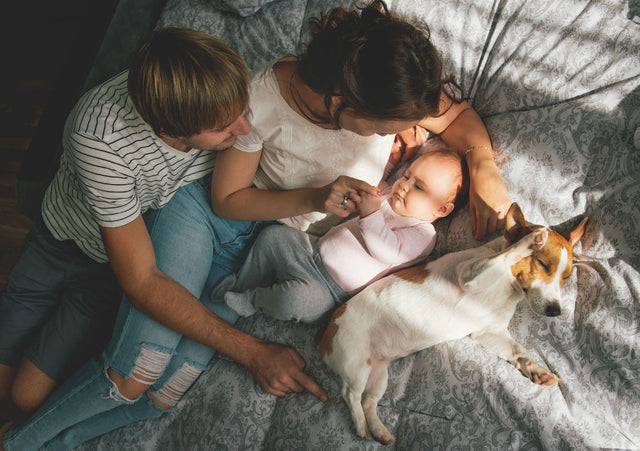Is Bed-Sharing or Co-Sleeping With Newborn Safe or Risky?

I know what I’m about to say may make me as unpopular as diaper rash with some of you. But I hope you’ll bear with me, because the decision to bed-share with your baby or not is a critically important one.
What is Co-Sleeping With a Newborn?
Co-sleeping (or bed-sharing) is as old as the hills. From our earliest days, parents and babies have slept together for protection, warmth, and convenience. And this custom is growing in popularity: The number of bed-sharing families more than doubled between 1993 and 2000. Dr. Fern Hauck of the University of Virginia reported that 42% of US families bed-share at 2 weeks, 34% at 3 months.
However, many tragic deaths have been linked to the “family bed.” For that reason, scientists have spent a great deal of time evaluating if—and how—babies can safely bed-share. And some concerning results are emerging.
What Happened When Bed-Sharing Families Were Filmed
In one British study, researchers reported that most bed-sharing babies had their mouths and noses covered with a blanket or sheet at some time during the night. A third of the sleeping moms also accidentally rested an arm or leg on their babies.
New Zealand infant sleep researchers, led by Sally Baddock, further confirmed the face-covering risk when co-sleeping. In a study videotaping 80 infants (40 in cribs and 40 bed-sharing), the faces of the bed-sharing babies were obstructed a total of nearly one hour per night! Typically, the mom or baby cleared the blanket away. But a quarter of those who experienced head covering awoke in the morning, still under bedding. That’s pretty unnerving.
Baddock also found that bed-sharing babies fed 3.7 times more often during the night, and that a quarter of the dads ended up moving out of the bed. And, most disturbingly, these babies spent on average 5.7 hours a night lying on their sides (not their backs, which is a safer position). One bed-sharing baby rolled all the way to the stomach.
More Research on Co-Sleeping With a Newborn
Does bed sharing increase the risk of SIDS? Studies from Germany, Holland, and Scotland have found that bed-sharing is connected to an increased SIDS risk for babies under 3 to 4 months of age (and even older, if the parents smoked cigarettes).
On the other hand, bed-sharing Japanese babies have not been found to have a higher SIDS rate—possibly because they’re sleeping on hard futons. And studies in England, Canada, and the United States found no increased bed-sharing risk with parents who are sober, attentive, and nonsmoking.
My Advice on Co-Sleeping with Newborn
Is there a safe way to co-sleep? After carefully considering all the current studies, most medical groups, including the American Academy of Pediatrics, advise against a baby sleeping in bed with parents. And I agree.
While I love bed-sharing with older children, it poses too many risks for babies during the first six months (or the first year, if your family has elevated risk factors.) I believe the safest choice is to have your baby sleep right next to your bed...not in your bed.
Final Thoughts: Co-Sleeping With a Newborn
I fully understand how much new parents struggle with sleep deprivation. In fact, Happiest Baby’s motivation for inventing SNOO Smart Sleeper was to tackle this very problem. Parents need an effective alternative to bed-sharing. In addition to providing a safe sleep environment, our SNOO bassinet boosts slumber for babies and parents, preventing the overwhelming exhaustion that nudges many families to bed-share in the first place.
With SNOO at your bed’s side, you can easily nurse and comfort your baby. And you’ll sleep more soundly knowing you’ve done everything humanly possible to keep your child as safe as can be. Learn more about purchasing—or renting—SNOO, today.